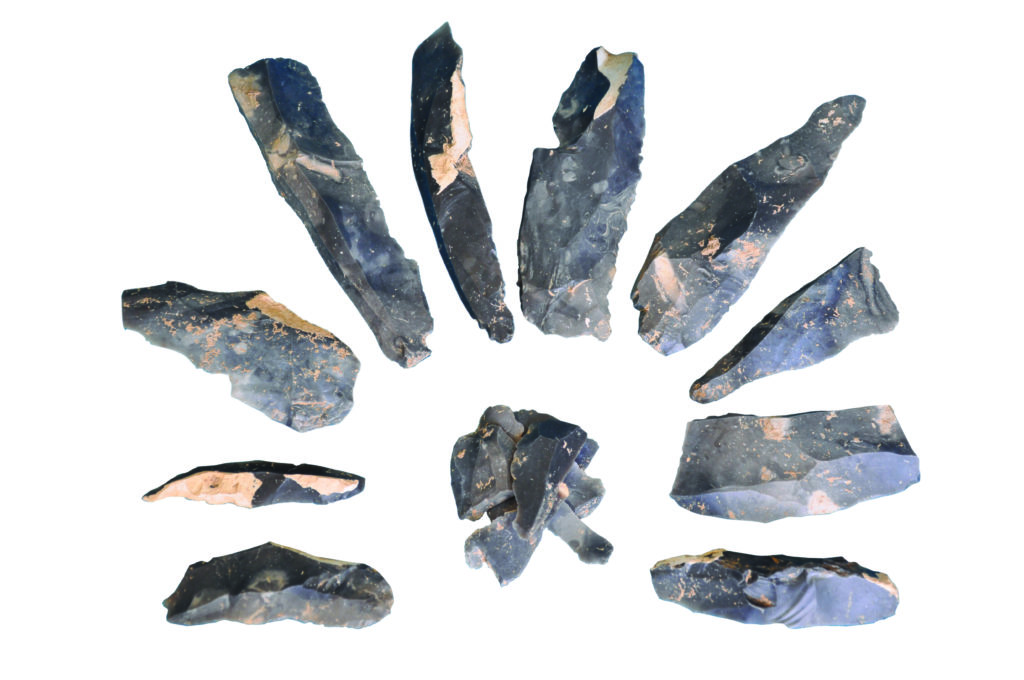The Right Tools
Object | Hidden Lives: a story of discovery
We may never find the skeletal remains of the first people to roam the lands that are now part of our campus, but fragments of their lives are revealed to us through some of the objects that they have left behind. Stone is the most common material to survive from prehistory. It survives well in the ground, whereas organic materials like leather and wood rot away. The Stone Age, named for the stone tools found by archaeologists, is the period where our species, Homo sapiens, emerged.
Many great social and technological changes were made by Homo sapiens in the Stone Age, for example, the transition from nomadic hunter-gatherers to settled farming communities. Artefacts have been discovered at the Wellcome Genome Campus from all three phases of the Stone Age: Palaeolithic (old), Mesolithic (middle) and Neolithic (new), which means that we know that humans have used this land for at least 12,000 years. Archaeologists have discovered Neolithic human remains, unearthed in the most recent excavation in 2014. However, the remains are in a poor condition and so much about their lives remains tantalisingly hidden.
